A Place in Cuba Called Aguacate
” … The mess they’ve left us with would make you want to cry… “
Helson Hernandez
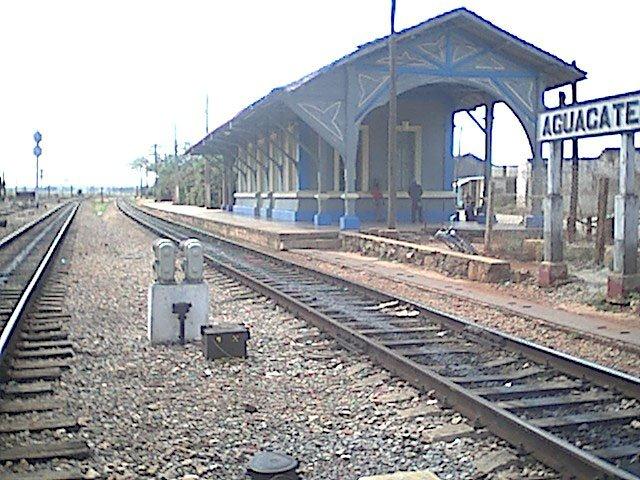
HAVANA TIMES — There’s a town in Cuba called Aguacate (Avocado) It’s located in the west of the country and belongs to the municipality of Madruga in what is now called Mayabeque province , 80 kilometers from the capital, and 30 kilometers from the city of Matanzas.
The beauty of the countryside here is typical, with strikingly green hills surrounding this community of ordinary, simple people. We’d like you to get to know them and marvel as we talk with several of its inhabitants about the wealth of historical and cultural values they retain in their memories about this lovely place, where sadness and discontent, caused by neglect and decay, are ever present in the voices of the people.
In the course of its existence, Aguacate has experienced a series of events, unknown to many and suppressed by others, that define its history. These days unfortunately its social life is a pale shadow of what it once was and those who have lived here can only look back with regret at what has been lost with the wish to tell their story and make it known to new generations.
Omiro Garcia Martinez, a member of the Association of Combatants and a local historian, was born in February 1937, and since then has spent his life here, witnessing events that many other historians have ignored .
OGM : In 49 when Fidel Castro finished his studies as a lawyer, he defended one of his first cases here in Aguacate concerning a farmer under threat of losing his land, and he of course managed to win that lawsuit.
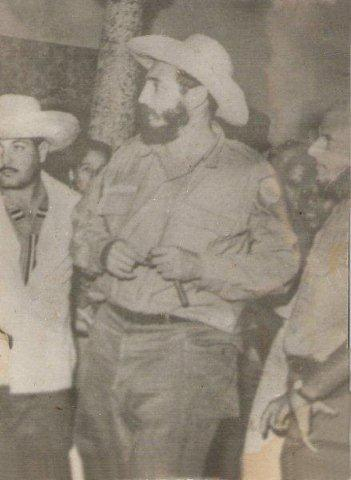
When visiting the village he made the acquaintance of a woman called Hortensia Valcárcel Valdez, who was later one of his close confidants. Hortensia was born in Aguacate, and at that time owned a textile workshop.
So Fidel started holding clandestine meetings in our town for the revolutionary struggle at the home of this lady; the house still exists and is located on 18th Street, corner 31. Almost every month meetings were held there with the leader of the Cuban Revolution.
I remember I used to hide behind a window to hear what they were saying, but one day I was surprised by Fidel who asked what was going on and someone explained to him that it was two boys who were hiding and listening to what he was saying.
When he was told we were 15 year olds, Fidel said : “Let them come in, they are our future.” Undoubtedly his friendship with Hortensia Valcárcel also gave Fidel Castro a closer bond with the community so he even got involved in many of our activities.
HT : What are your concerns about the Aguacate today?
GMO: Aguacate today has lost all its values. Looking back, Fidel Castro once said something I will never forget: “As a country town, Aguacate has nothing to envy a city for.”
He said this at a meeting in 1969, when he set up a community called Picadura, a magical place that inspired the renowned jazz musician Chucho Valdes to write “Valle de Picadura.” And the Commander knew what he was talking about, because he witnessed everything that made this place special.
Today, Aguacate has completely lost its autonomy, it is barely surviving because of its inhabitants. The municipality to which we belong, Madruga, has taken everything of value and of use to our community.
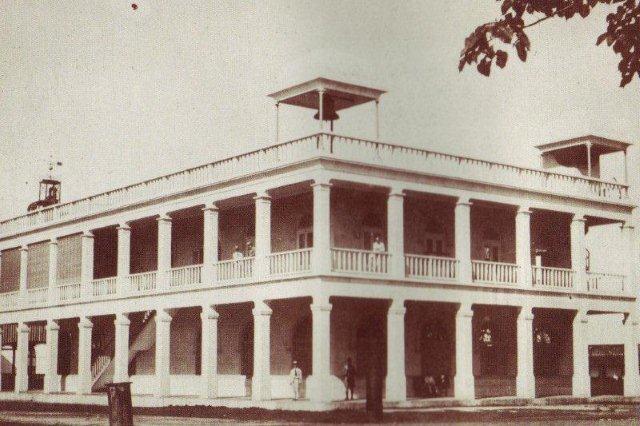
They took away the schools; the police station, the Maternal Home, things of capital value that belonged to us historically, the conditions they’ve left us in would make you want to cry.
We had a famous pastry shop called “La Dominica”, restaurants, a hotel, there was everything here. In July there was the famous Fiesta del Carmen which were tremendous and well above the level of anything we’ve got these days.
Even the sugar mill complex with 1500 workers and 500 acres of cane fields is gone, they destroyed that too. All our young people have to go to study in Madruga, with all the transport and economic difficulties that implies. What they have done to this town is unprecedented. Aguacate has become a backwater village.
HT: Right, the main source of income for the territory was its sugar mill, which largely determined the economic development of its inhabitants, being the main source of work. Now it is just like so many other places in Cuba that have become ruins with only the memory of those who saw it in other times.

Seeing pictures of what was the El Rosario mill is very impressive, also remembering that famous people like Raul Capablanca, the chess champion, known worldwide, who spent part of his youth in Aguacate. He left his mark there too, playing games in public as the photographs that revive these historical moments attest.
Luis Carrasco Fragoso , born in 1951 , went to work with the aforementioned sugar mill in September 77, in the finance department , and recalls some of his experiences while sharing his thoughts with us.
LCF: The mill was the backbone of this town. More than 60 percent of working-age people worked in it; it was the main source of income and allowed you to get training to develop special skills. Over the years the mill greatly expanded its production capacity.
It was the life and soul of the people, anyone in need went to the mill. From an economic point of view there is evidence to show that our mill was more efficient than others nearby, since some of them cut the cane by hand but we did it all mechanically. The sugar we produced was of a remarkable quality and highly refined.
HT: And when the Aguacate mill closed down, what then?
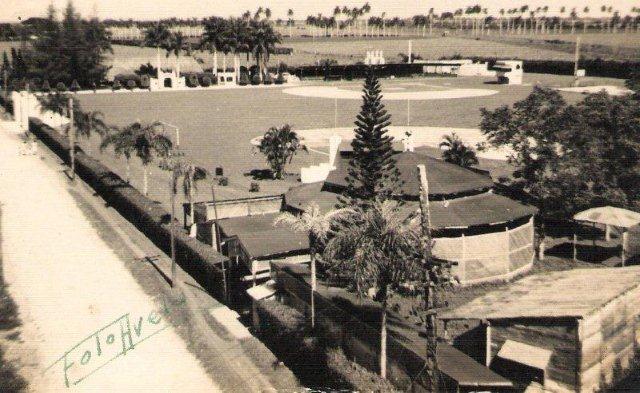
LCF: For reasons of government strategy, it was made non operational. I think doing that was a mistake; it was nearly new, they even had two new boilers that were hardly ever operated. Bear in mind that Aguacate had nothing more important than its sugar mill. Today the entire technical staff is scattered, working even in other provinces. Instead of improving our town things are getting worse, everything valuable we had is gone or in very poor condition.
HT: Another place worth mentioning that could also restore some vitality to Aguacate is the former Club Deportivo Rosario, well known before the triumph of the Revolution. It provided a space for recreation and leisure for people with a baseball field praised by those who visited the facility, without mentioning its magnificent structure, the abundant shade provided by the vegetation, including a swimming pool used by the famous American actor and swimmer Johnny Weissmuller, who played Tarzan in the movies. Jorge Cruz Martínez who has lived there for 68 years, was good enough to give us the details.
JCM: The Aguacate Sports Center, formerly known as the Club Rosario, was of unparalleled beauty. The pool, the grand ballroom, the gardens with their well pruned shrubs and the exclusive baseball field. Eddy Martin, a sports commentator beloved by many Cubans, attended our centre several times, described it as one of the best in the country for its features and the way it was designed.
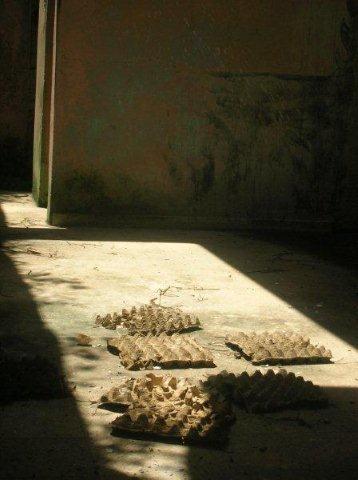
This was where they held the First National Sugar League Championship, in 1961, the winner being the team that represented our mill giving us first place and the cup. Here we had the privilege of watching great baseball stars as well as producing great players like Diego Martinez who even though he was one-armed, with his right arm amputated at the elbow, played exceptionally well.
Other players who have grown beyond this place like Bernardo Gonzalez, who participated in the national series for Industriales and in international events in various countries. Later his son José Antonio González Germade was a pitcher for the Havana team.
Currently we have an outstanding pitcher, Leinier Rodriguez, ready to join Team Cuba. Anyway, all I can say is we have a tradition and history that can never be wiped out and those of us who lived those glory days will pass it on to the coming generations, although all the charms in the sports club are gone because of the general neglect and deterioration in Aguacate.
HT: Regarding the transportation service, Aguacate had its own bus terminal since 1948 covering various destinations. Route 44 was the most well known, and is sorely missed by those telling their stories, since it connected the village directly with Havana.
In 1968, the station was moved to another region, making people depend from then onwards on other municipalities, badly hitting those having to travel to other destinations, including students and workers who have to perform their duties outside the territory.
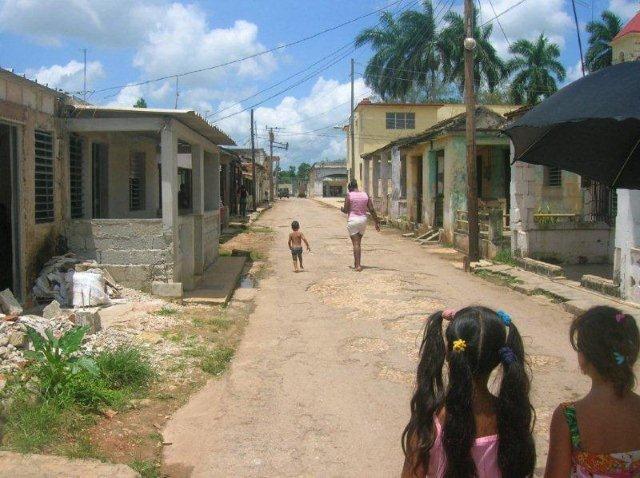
As most respondents agree, on losing its municipal status, Aguacate has been ignored in every sense of the word, and Madruga, the municipality which it now comes under, has appropriated everything that constitutes the pride and security of its people. Much more could be said but in this current report we only have space to present some of the major complaints of town folk and what they would like to see remedied.
Rosel Gonzalez, 52 is a caretaker at the former Social Club, only a shadow of what it was.
HT: What’s a typical day like in Aguacate ?
RG: A day in Aguacate is like being in a cemetery, brother.
HT: We are not out to point the finger at who is to blame nor to use the topic for sensationalist purposes but simply to ask how is it possible that so much history can be erased, and with it the spiritual legacy of an entire town?.
To cite one example, on passing the spot where Capablanca’s house once was, a figure famous in Cuban history, there was nothing left but the ruins, making it just another of the many sites that could continue to play a role for the benefit of a community that needs to be motivated and encouraged.
The town needs to find ways of making its days more productive and enriching, with options that existed in the past, but are now no longer available, not just from a lack of resources but rather from the lack of people able to convey a sense of belonging and prepared to fight against the neglect they have suffered.
Click on the thumbnails below to view all the photos in this gallery. On your PC or laptop, you can use the directional arrows on the keyboard to move within the gallery. On cell phones use the keys on the screen.






























My dad was born there in 1948. Luis Perez, his father was Juan Perez and his mother AnaMaria Baez and my uncle Juan Perez who was part of the original 24 Los Plantados. Some of my father’s farms were named Portela, El Trunque, el Margarita. He left in the Peter Pan expedition. I took him back there in October 2018 after 55years. I had never seen my dad with no words and tears. This was a man that was so hardened because of his rough upbringing as an orphan after the expedition never went the way it was suppose to. If any one knows of these names, please reach out to me. In 2018 when i went they knew my uncle and my grandma still so they were somewhat known.
I am very impressed about this article which hit me very fondly since I wan born and raise in Aguacate. My Great grandfather was Julian Averhoff owner of the Averhoff’s Farm . My grandfather Cirilo Estopinan was a soldier and fought in 1895 Independence War. I wont write a long essay but I will tell you that last year I decided to take my wife and daughters to see what once was beautiful Family Farm where we used to go and spends weekends gathering families reunions.Unfortunately I get lost in transition since I couldn’t find what once belong to my family,poor roads conditions and weeds took over the whole property including the fields where we just to have all kind of produces,not even sugar cane Cuba principal product. We still have the deed and will of the property but not our Farm. I am not old but not young enough to see if anyone one of my families member can rebuild what once was our. I emigrated to USA twenty years ago along with my family but Aguacate ( Averhoff ) will never die in my memories.
Gracias a todos por este bello articulo.
Quisas las mambisas a quien te refieres son las hermanas Rosario y Isabel Bolaños Fundora? Ellas eran mi tataratiaabuelas y hermanas de los mambises del Gral. Jose Maria “El Chema” Bolaños, Col. Francisco Javier Bolaños, y Miguel Antonio Bolaños. Eran de Pipian-Madruga pero creo que al fin de la guerra uno de ellos llego ser alcalde de Aguacate.
Mi abuela (Maria Magdalena Garcia Bolaños) nació en Aguacate en el 1881. Ella y dos hermanas fueron Mambisas, transportando armas para los cubanos que luchaban contra España. Su hermano Ubaldo muere en campaña durante la guerra. Una nota interesante (cuento de mi abuela); María Magdalena y hermanas Eloísa e Ina llevaban armas a los insurrectos (cubanos) debajo del vestido. Eso lo hacían en un coche (quitrín) y un hombre de cochero. Al pasar por un fuerte Español, la posta les grita “!Que bella carga llevas cochero!, y el responde gracias, Ud no sabe lo preciosa que es !! (refiriéndose a las damas y armas).
Gracias por su atención,
Abraham Embí, nieto orgulloso de una mamblas !!.
My greatgrandfather, Jose Lozano Betancourt, is recorded as being born in Aguacate. He married Maria Mederos Romero from Limonar. They had a child, my grandmother Candida Juana Lozano y Mederos. His parents were listed as Miguel and Luisa. I would love to know of any relatives who may have come to the states. Candida married her cousin , Juan Batista Lozano y Sosa.
What a coincidence to hear you were at Aguacate as a member of the Brigada Venceremos in 1970.
You might be interested in reading this new book, “Out of Cuba: Memoir of a Journey” by Regina Anavy. She describes her experiences in Aguacate as a member of the Brigada Venceremos in 1971. Perhaps you crossed paths?
So sad to hear of Aguacate’s decline…like so many other Cuban towns. One of the characteristics of the system seems to be a certain lack of initiative (and more importantly, resources) by local citizens to take up the challenge and turn things around when a major industry, such as the sugar mill, departs. Fifty years of Revolution seems to have created a “top-down” mentality, where most folks seem to be waiting on the “center” to promulgate directives, rather than initiating corrective actions themselves. Of course much of this has to do with lack of resources, and the mis-appropriation of what limited resources there are, by the central bureaucracy. Perhaps the greatest mistake of the Revolution was in 1967 or 1968, when the rest of the small- and medium-sized businesses were nationalized.
I remember Aguacate fondly. It was outside Aguacate, at the “Campamento Averhoff” that I cut sugar cane from November, 1969, to February 1970, as a member of the Brigada Venceremos during the “Zafra de los Diez Millones.” Several times I walked the few km. into town, especially on Saturday or Sunday afternoons. At that time the sugar mill was operating full blast and the town seemed vibrant. (Although even then there were transportation problems. I remember coming back on the bus from Habana one Sunday night and discovering that the bus ended its trip in Madruga. I had to walk at least an hour-and-a-half in total darkness from Madruga to Aguacate and Campamento Averhoff!
In 2008 I returned for a brief visit to Aguacate. After some trouble, I finally was able to locate the site of the former Campamento Averhoff. Actually, the agriculture around Aguacate seemed more vibrant. Instead of endless seas of monotonous sugar cane, that monoculture had been replaced with a variety of vegetable fields and fruit orchards.
Like Aguacate, there are many cities and towns up here which have fallen on hard times, beginning with the city of Detroit, much of which is now in ruins reminiscent of post World War II Berlin. Likewise, when I take the train south from where I live in Vermont, once the train enters Massachusetts and Connecticut it passes one post-industrial city and/or town after another, (Palmer, Springfield, Windsor Locks, Hartford, Meriden, Bridgeport, etc. etc.) with empty and ruined mills, abandoned downtowns and gutted residential neighborhoods.
With the entry of young and innovative entrepreneurs (drawn by low purchase prices of abandoned buildings and/or cheap rents, however, Detroit now seems to be in the early stages of revival. Cuba now needs such entrepreneurs, and they should come both from the diasphora and from those who have remained behind. Although I know nothing about business (neither does one of the new breed of urban entrepreneurs in Detroit, who was a former successful male model who started someting called “PonyRides”–named after one of the buildings he rehabbed and is using as an “incubator” for new start-up businesses), my dream would be rehabb the priceless buildings and gardens of San Miguel de los Banos, in Matanzas Province, and restore them to their “Last Year at Marienbad” resort status (1900’s through 1930’s). There are so many projects in Cuba waiting to be done. Why even the marabu can be used to make furniture–or to be used as fuel for bio-mass power generation. I hope Aguacate will arise once again to its former glory!